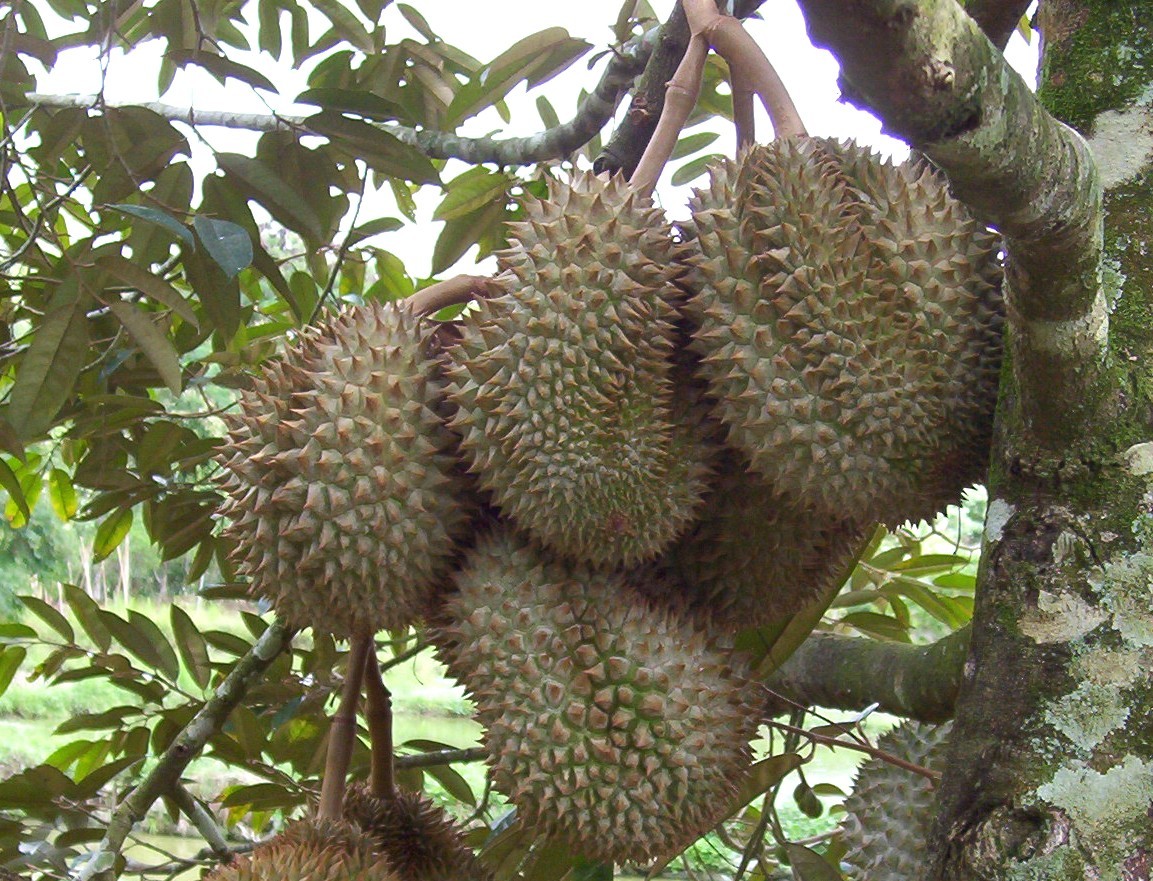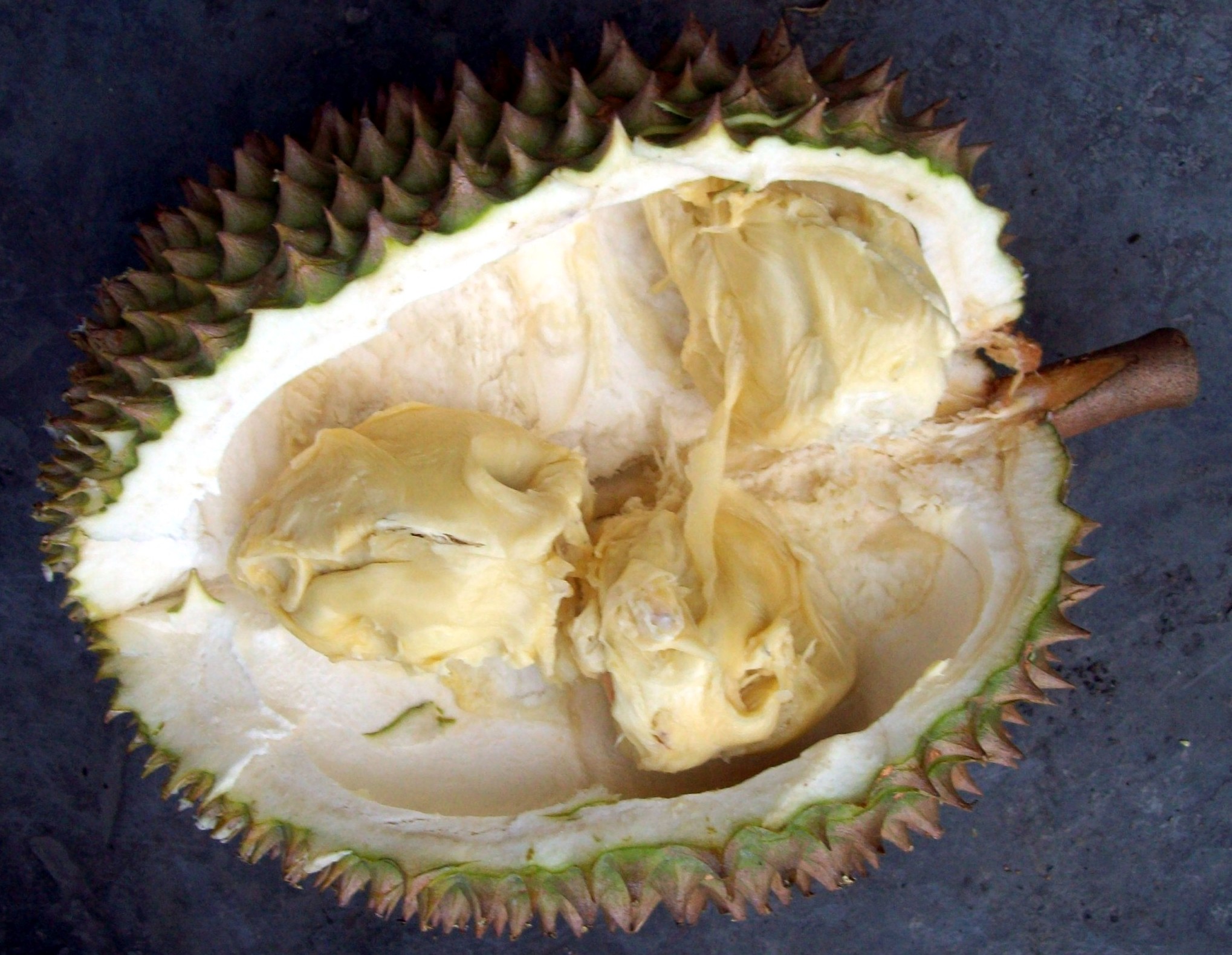Text and Photos by Henrylito D. Tacio
“If Davao City is a fruit, what kind of fruit should it be?”
If you ask that question to someone who is not from Davao, the most possible answer you will get is durian.
That’s what most people think of when they hear Davao. More often than not, people who visit the city always bring back home some durian as pasalubong — in various forms like candy bars, candy cubes, durian preserves, and durian cake.
Actually, durian is not a native fruit of Davao, and no one knows who brought the fruit here. But these days, durian is now associated with Davao because it is the place where most people can have it almost all year round.
Foreigners and locals who come to the city should not miss eating the “excellent taste” of the fruit whose “flavor surpasses all the other fruits in the world,” to quote the words of old traveler Linchott.
Those who despise the fruit say durian “smells like hell” or “rotten onion.” But durian aficionados describe “this fruit of a hot and humid nature” as something that “tastes like heaven.”
One foreign scribe wrote it aptly: “Love it or hate it – there’s no emotion in between. People either swarm to it like bees to honey, or bolt from the room. They faint with lusty joy, or they faint, period, with a handkerchief pressed to their nostrils.”
In his book “Following the Equator,” Mark Twain wrote about his durian experience in Southeast Asia: “It was a most strange fruit, and incomparably delicious to the taste, but not to the smell.”
The American humorist further wrote: “We found many who had eaten the durian, and they all spoke of it with a sort of rapture. They said that if you could hold your nose until the fruit was in your mouth a sacred joy would suffuse you from head to foot that would make you oblivious to the smell of the rind, but that if your grip slipped and you caught the smell of the rind before the fruit was in your mouth, you would faint.”
British naturalist Alfred Russell Wallace had the same experience. After a visit to the Interior of Borneo in 1855, he observed the offensive smell of durian in the house; some persons did not even attempt to taste it. “This was also my own experience when I first tried to taste it in Malacca, but in Borneo, I found a ripe fruit on the ground, and eating it out-of-doors, I became a confirmed durian eater.”
Because of the durian’s “foul-smelling odor,” most airlines don’t allow the fruit on board. In Singapore, the Asian country with the most rigid policy and rules concerning the care for the environment, the durian is forbidden even on subway stations and trains.


Despite this, there is an increasing demand for durian in the export market. It is called “exotic tropical fruit” in North America and Europe, where customers offer premium prices. Durian is also highly regarded in other Asian countries.
In the past, Thailand and Malaysia are the leading suppliers of durian to China. But since both countries were not able to cope with the huge demand, China is opening its doors to the Philippines, particularly Davao, where most fruits are grown.
“Davao’s favorite fruit durian is spreading its smell into the international markets,” reports Noel T. Provido, former chief of the information section of the regional office of the Department of Agriculture.
By weight, the edible portion (or aril as experts call it) of durian fruit is only 26% on average. Sixty percent of it is the rind, while the remaining 14% are seeds.
According to the Food and Nutrition Research Institute, the fruit is rich in vitamin C, phosphorus, calcium, and iron. It also contains fair amounts of thiamin, riboflavin, niacin. It is also a good source of carbohydrates, proteins, and fats.
According to a website, “the fruit is made of soft, easily digestible flesh made of simple sugars like fructose and sucrose that when eaten replenishes energy and revitalizes the body instantly. Though it contains a relatively higher amount of fats among the fruits, it is free from saturated fats and cholesterol.”
Here’s another health benefit: “Durian is rich in dietary fiber, which makes it a good bulk laxative. The fiber content helps protect the colon mucous membrane by decreasing exposure time to toxins. It also helps bind and eliminate cancer-causing chemicals from the gut.”
Where does the “foul-smelling” odor come from? In the 1912 issue of the Philippine Journal of Science, O.W. Barrett noted: “The chemical body which is responsible for the very pronounced odor is probably one of the sulfur compounds with some base perhaps related to that in butyric acid; it is not an oil nor a sugar, not a true starch but a substance new to the organic chemist.”
There are several varieties of durian in Davao. With 30% of the edible portion, Arancillo is one of the best. Its drawback: fruits spoil easily during a continuous downpour of rain. Puyat has yellow-orange flesh and doesn’t get easily rotten. Chanee tastes like sweet potato but sweet. Kob comes in two colors: yellow and white. Mon thong has thick and sweet flesh with a mild aroma. Duyaya is a bright yellow durian with a strange, elongated shape. But the best of them all is still the native variety, whose smell is so strong that those who have not tried durian yet should not try.
Here’s a timely tip to people visiting Davao who would like to eat durian. After eating, put some water into the empty durian shell and wash your hands in it. This technique reportedly removed the smell of the durian in your fingers.
Try anything else — detergents, deodorants, or whatever, but all these will be useless– the smell will remain just as pungent.
The word “durian” comes from the Indonesian “duri” (thorn) and is botanically known as “Durio zibethinus.” It is native to Indonesia and Malaysia. It also grows in Brunei, Cambodia, Laos, the Philippines, Thailand, and Vietnam.
In the Malay Archipelago, about 150 years ago, famed Victorian naturalist and evolutionary theorist Alfred Russel Wallace wrote, “To eat durian is a new sensation worth a voyage to the East to experience.”
Pregnant women or people with high blood pressure are traditionally advised not to consume durian. Here’s another warning: “Discover” magazine reported an incident where a woman with preexisting renal failure ate durian and ended up critically ill from potassium overdose.
There are also stories about durian being harmful when eaten with coffee or alcoholic beverages. The latter belief can be traced back at least to the 18th century when Rumphius stated that one should not drink alcohol after eating durians as it will cause indigestion and bad breath (halitosis).
In 1929, J. D. Gimlette advised in his “Malay Poisons and Charm Cures” that the durian fruit must not be eaten with brandy. In 1981, J. R. Croft wrote in a book about “a feeling of morbidity” that often follows should a person drink alcohol too soon after eating durian. Several medical investigations on the validity of this belief have been conducted with varying conclusions.

